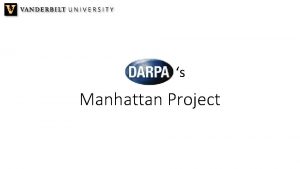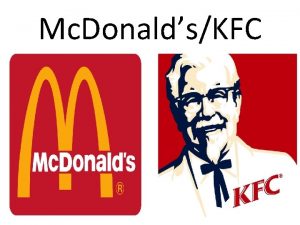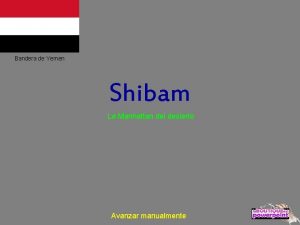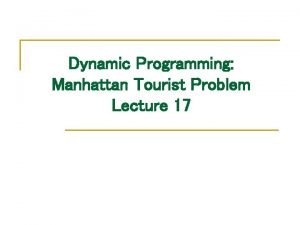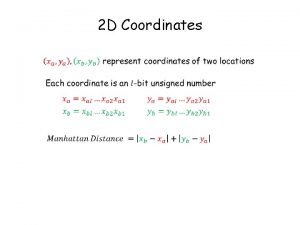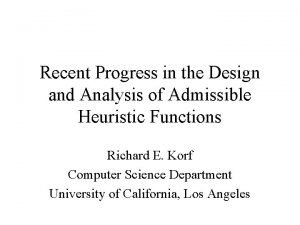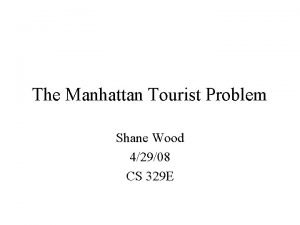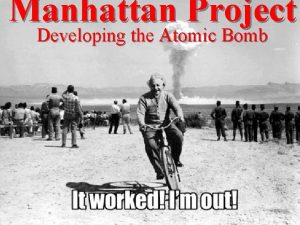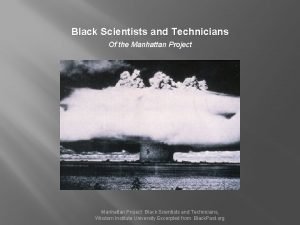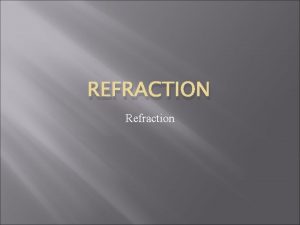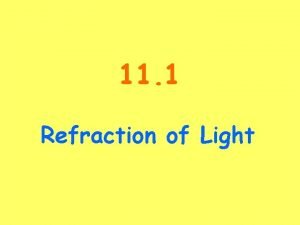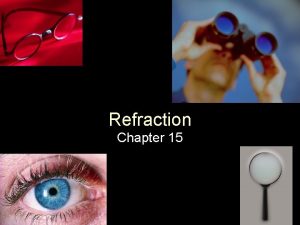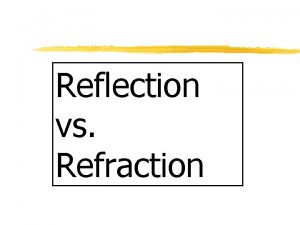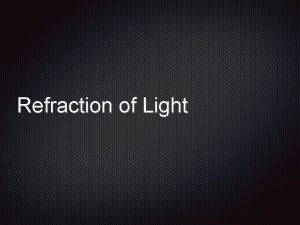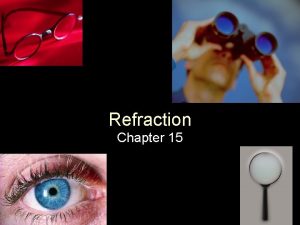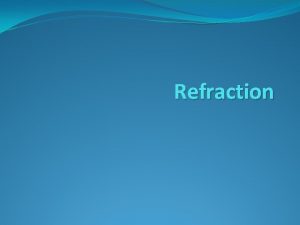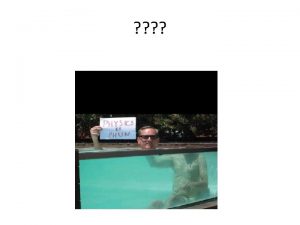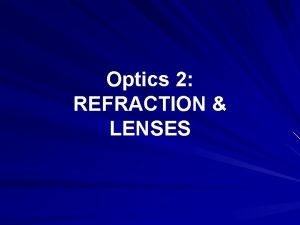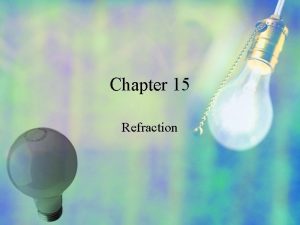9 3 Refraction Manhattan Press H K Ltd













- Slides: 13

9. 3 Refraction © Manhattan Press (H. K. ) Ltd. 1

9. 3 Refraction (SB p. 36) Refraction of wave Refraction occurs when a wave moves from one medium to another, resulting a change in wave speed. Unless the wave is incident normally at the boundary between two media, the direction of propagation is changed after refraction. © Manhattan Press (H. K. ) Ltd. 2

9. 3 Refraction (SB p. 36) Refraction of wave A plane water waves incident at a boundary between deep and shallow water. © Manhattan Press (H. K. ) Ltd. 3

9. 3 Refraction (SB p. 37) Refraction of wave As a wave moves across the boundary from deeper to shallower water: - it is refracted towards the normal. - 2 1 - v 2 v 1 © Manhattan Press (H. K. ) Ltd. 4

9. 3 Refraction (SB p. 37) Snell’s law By Snell’s law, where n is the refractive index. Since v = f where f = frequency of the source, © Manhattan Press (H. K. ) Ltd. 5

9. 3 Refraction (SB p. 37) Refraction of wave As a wave moves across the boundary from shallower to deeper water: - it is refracted away from the normal. - 2 1 - v 2 v 1 © Manhattan Press (H. K. ) Ltd. 6

9. 3 Refraction (SB p. 37) Refraction of wave When light waves move from a less dense medium (e. g. air) into a denser medium (e. g. water), the waves are refracted such that the wavelength and speed are both reduced. © Manhattan Press (H. K. ) Ltd. 7

9. 3 Refraction (SB p. 37) Refraction of wave On the other hand, when a sound wave moves from a less dense medium, say air, into a denser medium, say water, it is refracted away from the normal. The speed of sound in water is greater than that in air and consequently the wavelength is longer in water. Go to Example 2 © Manhattan Press (H. K. ) Ltd. 8

End © Manhattan Press (H. K. ) Ltd. 9

9. 3 Refraction (SB p. 38) Q: A bar vibrating with a frequency of 20 Hz produces plane ripples in a ripple tank. The wave moves with a speed of 24 cm s – 1 until it reaches a shallow region where its speed becomes 18 cm s – 1. The boundary PQ of the shallow region is at an angle of 45° to the incident plane waves. © Manhattan Press (H. K. ) Ltd. 10

9. 3 Refraction (SB p. 38) (a) Calculate (i) the wavelength of the ripples before and after crossing the boundary PQ, and (ii) the change in the direction of propagation of the ripples. (b) Draw a diagram to show the wave pattern in the ripple tank. Solution © Manhattan Press (H. K. ) Ltd. 11

9. 3 Refraction (SB p. 38) Solution: (a) (i) Before crossing the boundary PQ: (b) Wavelength, λ 1 = = = 1. 2 cm After crossing the boundary PQ: Wavelength, λ 2 = = = 0. 9 cm (ii) Angle of incidence, i = 45 Let angle of refraction be r. Using = sin r = 32. 03 Change in the direction propagation = 45 32. 03 = 12. 97 © Manhattan Press (H. K. ) Ltd. 12

9. 3 Refraction (SB p. 38) Solution (Cont’d): (b) Return to Text © Manhattan Press (H. K. ) Ltd. 13
 Manhattan tutorial
Manhattan tutorial Kfc manhattan
Kfc manhattan Emsl calgary
Emsl calgary Manhattan del desierto
Manhattan del desierto Standing female nude poem
Standing female nude poem Ibd meetup
Ibd meetup Manhattan tourist problem
Manhattan tourist problem Torrance memorial tcu
Torrance memorial tcu Manhattan distance formula
Manhattan distance formula Manhattan distance
Manhattan distance Manhattan tourist problem
Manhattan tourist problem Captain of the 1964 top of the form team analysis
Captain of the 1964 top of the form team analysis The objective of the manhattan project was to develop
The objective of the manhattan project was to develop J ernest wilkins jr biography
J ernest wilkins jr biography
